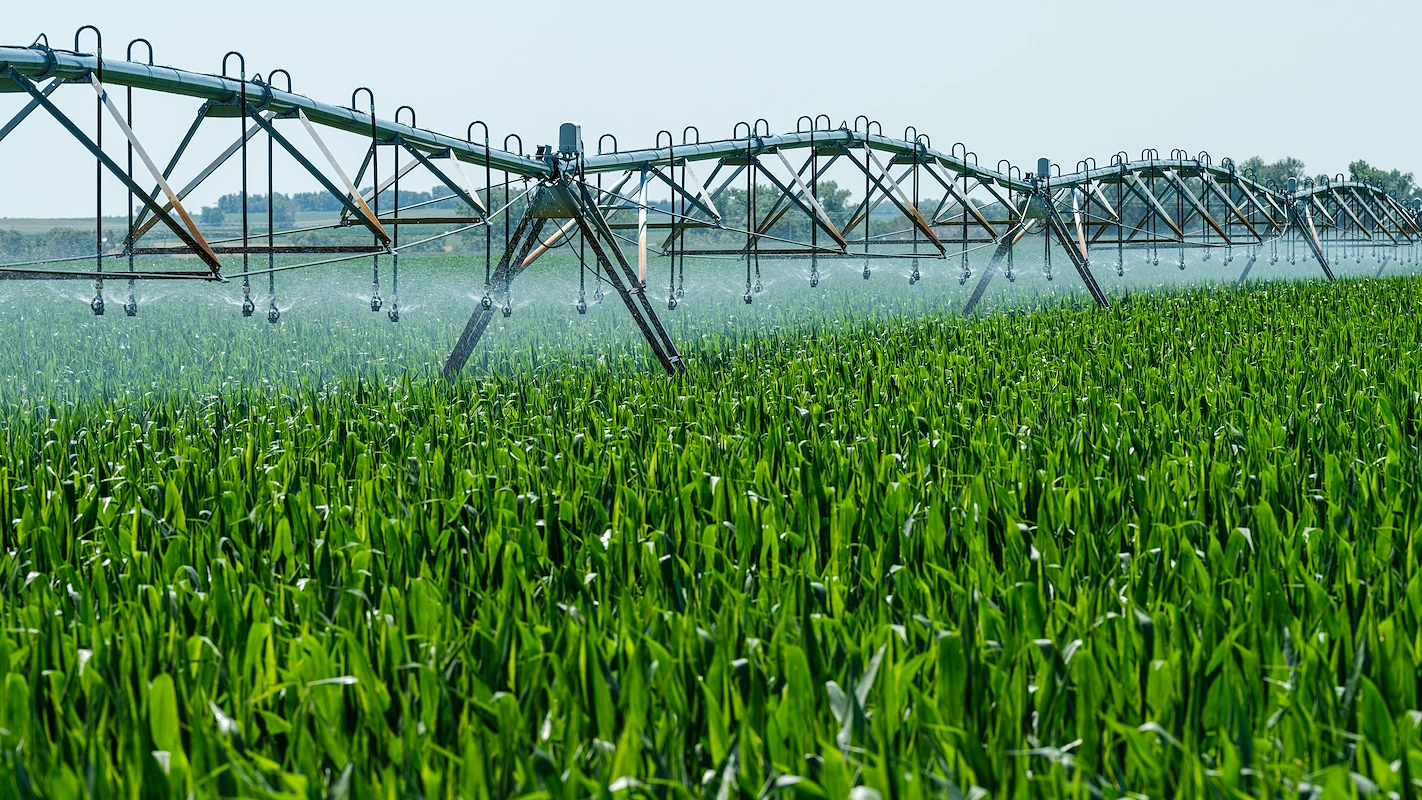Starting a cake business is a rewarding venture that combines your passion for baking and artistry with business savvy. The industry is worth billions of dollars, with steady demand for custom cakes for birthdays, weddings, and other special celebrations.
This guide will take you through the practical steps of validating your business concept, securing funding, obtaining the right permits, and acquiring equipment to help you launch a successful cake business in the U.S.
Step 1: Plan and validate your business concept
First, research your local market. Visit bakeries, coffee shops, and farmers' markets to see what cakes sell and at what price. Also, search social media for local bakers to understand popular styles and customer demand. This fieldwork provides a baseline that online searches alone cannot.
Next, identify your direct competitors using Google Maps and local business directories. Note their specialties, from high-end wedding cakes to simple birthday treats. A frequent misstep is to ignore what makes competitors successful. Analyze their reviews to find service gaps you can fill.
Startup cost breakdown
Initial investment can be a hurdle, so a clear budget is important. Many new bakers overspend on niche equipment they rarely use. You might want to start with versatile basics and expand your collection as you get specific orders. This keeps initial costs manageable.
Expect to spend between $2,500 and $7,500. This range typically covers business licenses ($100-$500), essential baking equipment like a quality stand mixer and ovens ($2,000-$5,000), initial ingredients ($300-$800), and basic marketing materials like a website ($200-$1,000).
Here are 3 immediate steps to take:
- List three local competitors and analyze their pricing and popular cake styles.
- Create a detailed budget for your first six months using the cost ranges provided.
- Survey 10-15 potential customers about their cake preferences and what they would pay.
Step 2: Establish your legal structure and licenses
Your next move is to choose a business structure. Most new cake businesses form a Limited Liability Company (LLC). This structure protects your personal assets, like your home and car, if the business faces legal issues. It offers a good balance of protection and simplicity.
An LLC also provides tax flexibility with pass-through taxation, so profits are taxed on your personal return. A sole proprietorship is simpler but offers no liability protection. The cost to form an LLC is typically between $50 and $500, depending on your state.
Permits and regulations
Your ability to operate from home depends on your state's cottage food laws. These rules dictate what you can sell, where you can sell it, and how much you can earn annually. For example, some states cap sales at $50,000 per year.
Many bakers overlook the fine print in these laws. You might find you cannot ship cakes across state lines or sell to restaurants. Always check your state's specific rules on its Department of Health website to avoid penalties.
You will likely need a food handler's permit, which costs around $15 and requires a short online course. In addition, you will need a general business license from your city or county. Your local health department may also require a home kitchen inspection.
On the federal level, you should get an Employer Identification Number (EIN) from the IRS. It is free to apply for online and functions like a Social Security number for your business. You need it to open a business bank account and hire employees.
Here are 4 immediate steps to take:
- Research your state's specific cottage food laws and sales limits.
- Apply for a free Employer Identification Number (EIN) on the IRS website.
- Contact your local health department to ask about food handler's permits and kitchen inspections.
- Compare the costs and process to form an LLC versus a sole proprietorship in your state.
Step 3: Protect your business with insurance
With your legal structure in place, the next step is to secure insurance. General liability insurance is your foundation. It covers claims if someone gets injured at your market stall or if you damage a venue's property during a delivery.
A major risk for bakers is a customer having an allergic reaction. This is where product liability insurance helps. It often comes bundled with general liability and covers claims related to the food you sell. Many bakers overlook this, but a single incident can be costly.
Insurance types and costs
You might want to consider a Business Owner's Policy (BOP). It combines general liability and commercial property insurance, which protects your equipment. A BOP with $1 million in liability coverage typically costs between $500 and $1,200 per year.
If you use your car for deliveries, your personal auto policy will not cover accidents. You will need a commercial auto policy. Also, once you hire even one employee, most states require you to have workers' compensation insurance.
Speaking of policies, get quotes from providers who know the food industry. You could look at the Food Liability Insurance Program (FLIP), Hiscox, or Next Insurance. They understand the specific risks that bakers face and can offer tailored coverage.
Here are 4 immediate steps to take:
- Get quotes for a Business Owner's Policy from two specialized insurers.
- Confirm that product liability is included in your general liability policy.
- Ask your auto insurance agent about adding commercial coverage for deliveries.
- Check your state's requirements for workers' compensation if you plan to hire help.
Step 4: Set up your location and equipment
Location and leasing
If your cottage food laws are too restrictive, you will need a commercial space. Look for locations zoned for food service. A small production kitchen can be 500-1,500 square feet. Shared commercial kitchens are a great way to start without a long-term lease.
When you negotiate a lease, ask for a tenant improvement allowance. This can help pay for plumbing or electrical upgrades your kitchen needs. Landlords may agree to this for a multi-year lease, which reduces your upfront costs.
Equipment and suppliers
With your location sorted, your focus shifts to equipment. Your oven and mixer are your workhorses. Expect to pay $3,000-$7,000 for a commercial convection oven and $2,000-$4,000 for a 20-quart stand mixer. It is tempting to start with residential appliances, but they break down quickly under heavy use.
You will also need stainless steel work tables ($150-$400 each) and a three-compartment sink ($400-$1,000) to meet health codes. For supplies, check out WebstaurantStore or a local restaurant depot. Online suppliers often have no minimum order, which helps manage cash flow.
Here are 4 immediate steps to take:
- Research shared commercial kitchens in your area and compare their hourly rates.
- Price out a commercial convection oven and a 20-quart mixer from two different suppliers.
- Check your city’s zoning map for areas approved for commercial food production.
- Create a list of equipment you need versus what you want to prioritize spending.
Step 5: Set up your payment processing
For custom orders, it is standard to require a 50% non-refundable deposit. This protects you if a client cancels last minute. The final balance is then due upon pickup or before delivery. Many new bakers skip this and risk losing money on ingredients and time.
This brings us to how you will accept payments. You need a system that works both online and in person. Look for a solution with low transaction fees and no monthly charges, especially when you are just starting out. Some processors also require you to buy extra card readers.
For cake businesses that need to accept payments on-site or on-the-go, JIM offers a streamlined solution. With JIM, you can accept debit, credit, and digital wallets directly through your smartphone—just tap and done.
At just 1.99% per transaction with no hidden costs or extra hardware needed, it is particularly useful for taking final payments on delivery. The average commission rates from other providers are often 2.5% to 3.5%, which cuts into your profit margin on every sale.
- Get Started: Download JIM app for iOS
- Make a Sale: Type the sales amount, hit sell, and ask your customer to tap their card or device on your phone
- Access Funds: Your money is available right on your JIM card as soon as the sale is done - no waiting for bank transfers
Here are 3 immediate steps to take:
- Draft your payment policy, including a 50% deposit for custom orders.
- Compare JIM's 1.99% transaction fee with the rates of two other payment processors.
- Download the JIM app to see how it works on your phone.
Step 6: Secure funding and manage your finances
The SBA Microloan program is a great starting point for new food businesses. These loans range from $500 to $50,000 and often have more flexible credit requirements than traditional bank loans. You will need a solid business plan to apply.
Interest rates for these loans typically fall between 8% and 13%. Another option is Kiva, a platform that facilitates 0% interest crowdfunded loans up to $15,000. It can be a good fit for businesses with strong community support.
Working capital and financial planning
For the first six months, you should aim for $3,000 to $5,000 in working capital. This cash on hand covers your ingredients, marketing, and any unexpected repairs. It is your safety net before sales become consistent.
Many new bakers get caught off guard by fluctuating ingredient prices, especially for items like vanilla and butter. It is a good idea to build a 15-20% cushion into your ingredient budget to absorb these price swings without hurting your profits.
Here are 4 immediate steps to take:
- Research SBA Microloan lenders through the SBA's local assistance tool.
- Explore the Kiva platform to see if your business is a good fit for a 0% interest loan.
- Calculate your working capital needs for the first six months.
- Add a 20% buffer to your ingredient cost projections in your budget.
Step 7: Hire your team and streamline operations
Hiring your first employees
As orders increase, you may need help. Your first hires will likely be a part-time Baker's Assistant for prep and cleanup, at $15-$20 per hour. A skilled Cake Decorator might earn $18-$25 per hour, depending on their portfolio and speed.
A frequent misstep is hiring friends without clear roles. Always use a formal job description. Also, remember that every employee who handles food must have a valid food handler's permit, which you should verify before their first shift.
Managing your staff and workflow
Plan for labor costs to be 25-35% of your revenue. This helps you decide when you can afford to hire. Forgetting to budget for payroll taxes and workers' compensation on top of wages can quickly strain your finances, so account for these from day one.
Once you have a team, use a scheduling app like Homebase or When I Work to manage shifts. These systems help you avoid being understaffed during peak wedding or holiday seasons. They also provide a clear record of hours worked for payroll.
Here are 4 immediate steps to take:
- Draft job descriptions for a Baker's Assistant and a Cake Decorator.
- Calculate your target labor cost using the 25-35% of projected revenue range.
- Check your state's website for workers' compensation requirements.
- Compare the free plans for scheduling apps like Homebase and When I Work.
Step 8: Market your business and find customers
Create a visual portfolio
Your marketing starts with great photos. Use Instagram and Facebook to showcase your work. Many new bakers hurt their brand with dark, blurry pictures. You should always shoot your cakes in bright, natural light to make them look as delicious as they taste.
Post consistently, at least 3-4 times a week. Use relevant hashtags like #cakedecorating, #[yourcity]cakes, and #customcakes to reach a local audience. This helps potential customers find you when they search for celebration cakes.
Connect with your local community
To show up in local searches, create a free Google Business Profile. This puts you on Google Maps and is often the first place customers look. Also, consider partnerships with local wedding planners and event venues. You can offer them a 10-15% referral fee for each confirmed order.
Your Customer Acquisition Cost (CAC) is what you spend to get one new customer. If you spend $100 on ads and get four orders, your CAC is $25. To start, you might want to aim for a CAC under $40 to keep your marketing budget efficient.
Here are 4 immediate steps to take:
- Create an Instagram account and post 10 high-quality photos of your best cakes.
- Set up your free Google Business Profile with your service area and hours.
- List three local wedding planners or event venues to contact for partnerships.
- Calculate a target Customer Acquisition Cost for your first marketing campaign.
Step 9: Price your cakes for profit
Pricing models and markups
Your prices must cover ingredients, your time, and overhead. Many bakers accidentally underprice because they only charge for ingredients. You should pay yourself an hourly rate, perhaps $20-$30 per hour, and factor that into every cake's price.
A simple way to start is with cost-plus pricing. Add your ingredient cost, labor cost, and a portion for overhead. For example, if a cake's total cost is $70, a 100% markup would set the final price at $140, giving you a 50% profit margin.
For custom designs, you might use value-based pricing. This model prices the cake based on your artistic skill and the client's perceived value. A complex wedding cake with handmade sugar flowers commands a higher price than its materials suggest.
Competitive analysis
With your costs calculated, you can now look at what competitors charge. Check their websites or call for a quote on a standard 8-inch birthday cake. This gives you a market baseline to position your own prices.
Here are 4 immediate steps to take:
- Calculate the total cost (ingredients, labor, overhead) for one of your signature cakes.
- Research the prices of three local competitors for a similar cake.
- Decide on a markup that gives you a target profit margin of 60-70%.
- Create a simple pricing sheet for your standard cake sizes and flavors.
Step 10: Maintain quality and scale your operations
Quality control and consistency
As your business grows, it can be a challenge to keep every cake consistent. Create a "recipe bible" with exact weights, baking times, and photo guides for decoration. This ensures every cake meets your standard, no matter who bakes it.
You should aim for specific standards. For example, every 8-inch, three-layer cake could weigh between 4.5 and 5 pounds. This level of detail prevents quality from slipping when you get busy.
Knowing when to grow
Growth should be a deliberate decision. A good benchmark to hire a part-time assistant is when you consistently handle 15-20 orders per week. Many bakers wait too long, which often leads to burnout and rushed orders.
Once you approach your state's cottage food sales cap, it is time to look at a commercial kitchen. To manage this growth, you might want to use software like Bake Diary or CakeBoss to track orders and inventory.
Here are 4 immediate steps to take:
- Create a recipe binder with standardized measurements for your top three cakes.
- Set a weekly order number (e.g., 15) as your trigger to start looking for an assistant.
- Research the features of a bakery management software like Bake Diary.
- Check your state's cottage food law again to confirm your annual sales limit.
You have a clear path to turn your passion for baking into a business. Remember, your cakes are your best marketing, so let their quality and artistry speak for themselves. With a solid plan in place, you are ready to begin this exciting venture.
And when you collect payment, a simple approach helps. JIM turns your smartphone into a card reader, so you can accept payments on the spot for a flat 1.99% fee, with no extra hardware. Download JIM to streamline your sales.















